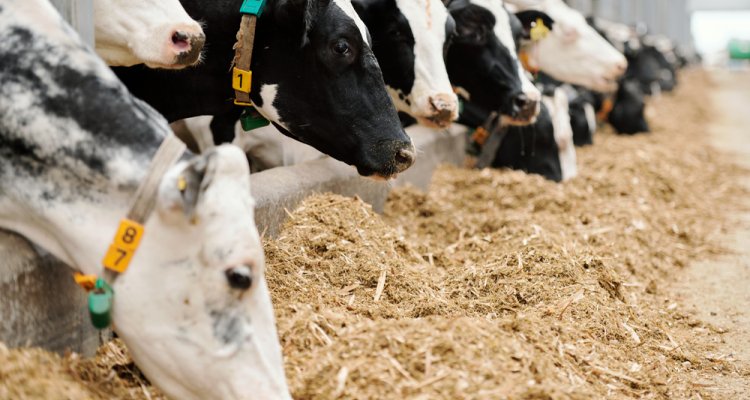
Project
Milk urea as a tool to improve nitrogen efficiency in the dairy sector
There is an urgent need to mitigate nitrogen (N) emissions from the dairy sector. Targeted strategies on cow, farm and national level are lacking, due to the difficulty of measuring N excretions from individual cows and farms. The usage of the milk urea content (MU) as a proxy is an option. MU is possibly linked to the cow’s N excretion in urine, is available on cow and farm level, can be targeted by a breeding value (BV_MU) and by feeding strategies. However, a significant part of MU variation and resulting variation in N emissions is unexplained, and under discussion, which impedes the application of MU as a tool to reduce N emissions for farmers and the government so far. This project investigates the variation in MU, BV_MU and urine and fecal N excretion, making use of existing datasets from previous trials, mechanistic modelling, and a cow trial as a proof of concept, in order to enable use of MU to mitigate N emissions. The project aims to explore how feeding and breeding may need to go hand in hand and which interactions exist, when focussing on N-limited feeding conditions. The project results will be disseminated towards dairy farmers, stakeholders in the whole dairy chain, and towards the government with its N reduction policy and task of performing ammonia inventory
There is an urgent need to mitigate nitrogen (N) emissions from the dairy sector. Targeted strategies on cow, farm and national level are lacking, due to the difficulty of measuring N excretions from individual cows and farms. The usage of the milk urea content (MU) as a proxy is an option. MU is possibly linked to the cow’s N excretion in urine, is available on cow and farm level, can be targeted by a breeding value (BV_MU) and by feeding strategies. However, a significant part of MU variation and resulting variation in N emissions is
unexplained, and under discussion, which impedes the application of MU as a tool to reduce N emissions for farmers and the government so far. This project investigates the variation in MU, BV_MU and urine and fecal N excretion, making use of existing datasets from previous trials, mechanistic modelling, and a cow trial as a proof of concept, in order to enable use of MU to mitigate N emissions. The project aims to explore how feeding and breeding may need to go hand in hand and which interactions exist, when focussing on N-limited feeding conditions. The project results will be disseminated towards dairy farmers, stakeholders in the whole dairy chain, and towards the government with its N reduction policy and task of performing ammonia inventory